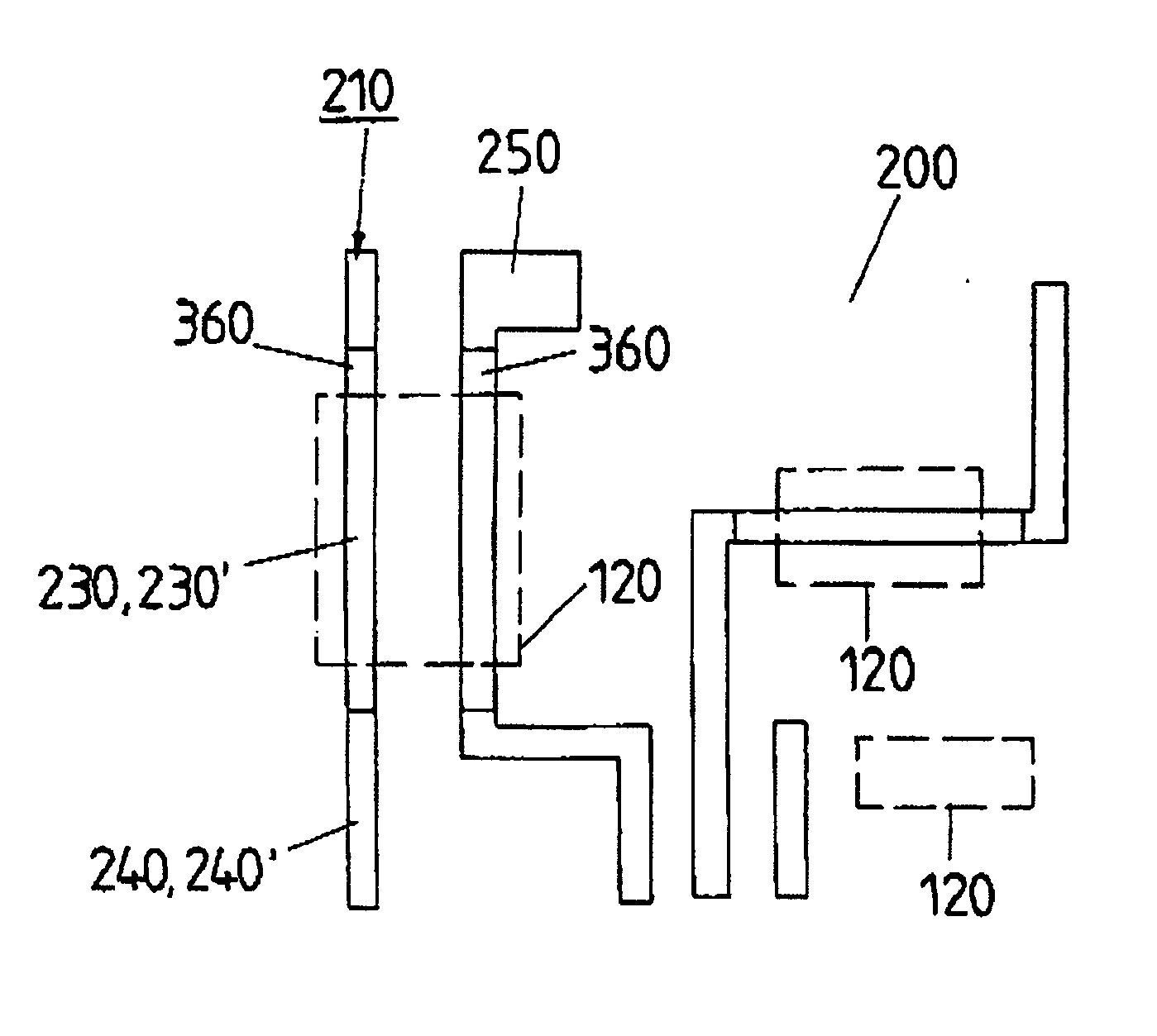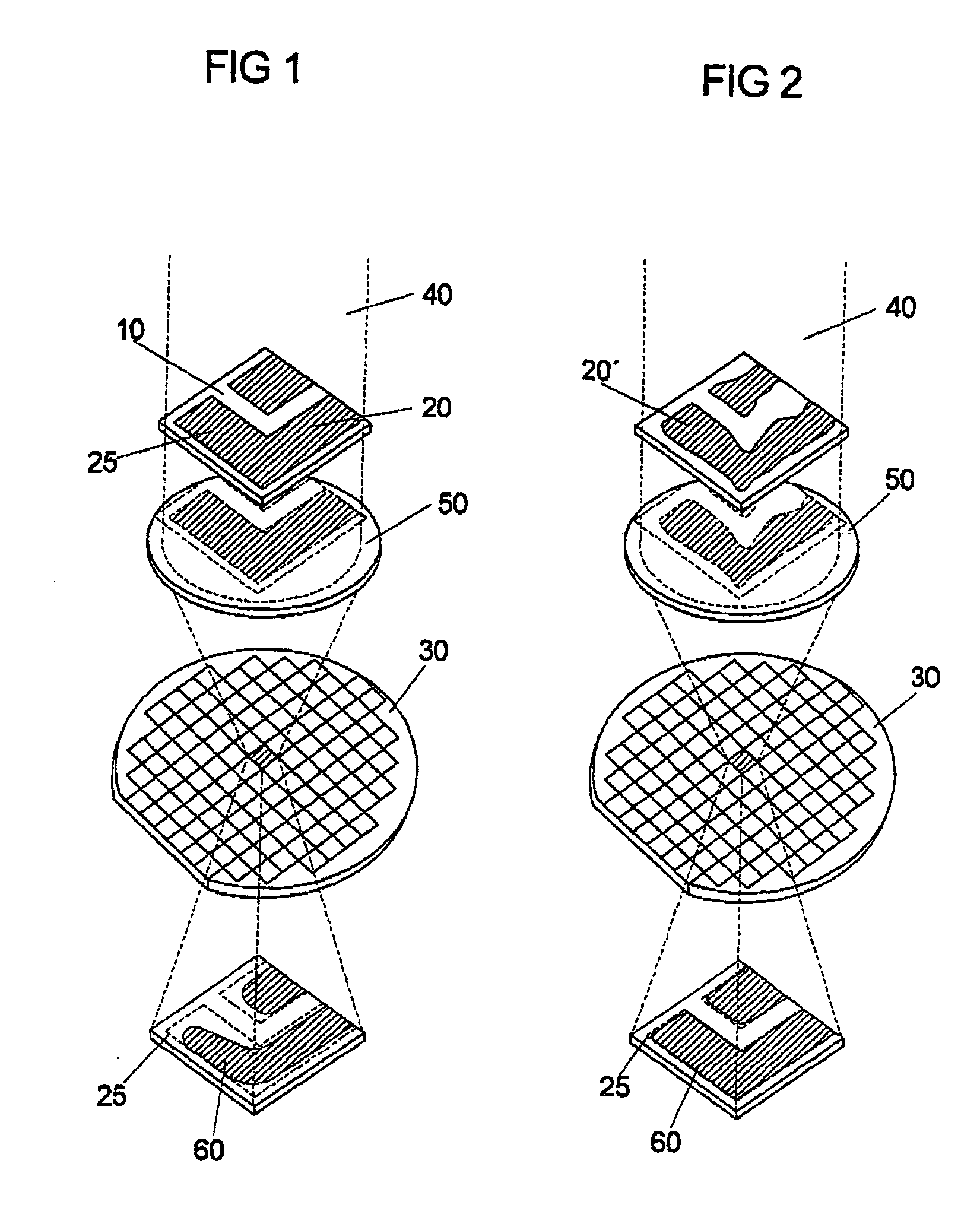Method for producing for a mask a mask layout which avoids aberrations
- Summary
- Abstract
- Description
- Claims
- Application Information
AI Technical Summary
Benefits of technology
Problems solved by technology
Method used
Image
Examples
third exemplary embodiment
[0077] In the method, the SRAF auxiliary structures 350 are arranged exclusively in the region of the active layout areas 230′ (compare FIGS. 8 and 9). No SRAF auxiliary structures are placed in the remaining layout areas 240′ (gate-only placement as third exemplary embodiment).
fourth exemplary embodiment
[0078] It is to be seen in FIG. 9 that despite the optimization of the mask layout it is possible in accordance with the OPC step for areas 400 to occur in which the inactive layout areas 240′ make contact with the active layout areas 230′. These problems can occur in isolated fashion since—as stated above—the inactive layout areas 240′ are processed with a defocus OPC method such that a certain widening of lines and / or corners results. Such contact areas must be detected, if appropriate in the course of aftertreatment, for example automatic or manual aftertreatment, and repaired (fourth exemplary embodiment).
fifth exemplary embodiment
[0079] It is also to be seen in FIG. 9 that the landing pads 250 are preferably likewise subjected to separate treatment (fifth exemplary embodiment), since it is generally impossible to use conventional self-aligned contacts for landing pads, this being so because landing pads regularly have particular overlay requirements owing to the fact that on the one hand landing pads are not allowed to become too small in order to maintain possible contact, and on the other hand they are not allowed to become too large so as to avoid short circuits (bridging) with adjacent wiring structures. Consequently, a target OPC method is generally to be preferred for landing pads, instead of a defocus OPC method.
[0080] Just like the active layout areas, landing pads can likewise be detected from mask layouts being laid one on top of the other; alternatively, the landing pads can also be detected manually or with the aid of a data processing system by using their typical geometric dimensions or by usin...
PUM
 Login to View More
Login to View More Abstract
Description
Claims
Application Information
 Login to View More
Login to View More - R&D
- Intellectual Property
- Life Sciences
- Materials
- Tech Scout
- Unparalleled Data Quality
- Higher Quality Content
- 60% Fewer Hallucinations
Browse by: Latest US Patents, China's latest patents, Technical Efficacy Thesaurus, Application Domain, Technology Topic, Popular Technical Reports.
© 2025 PatSnap. All rights reserved.Legal|Privacy policy|Modern Slavery Act Transparency Statement|Sitemap|About US| Contact US: help@patsnap.com



